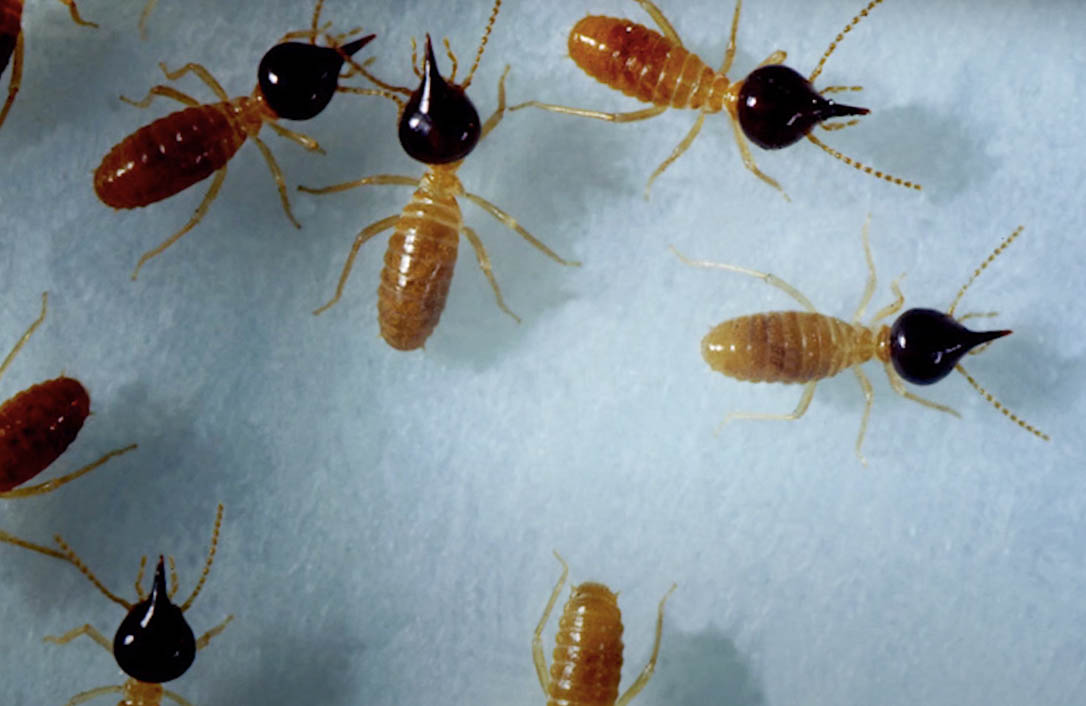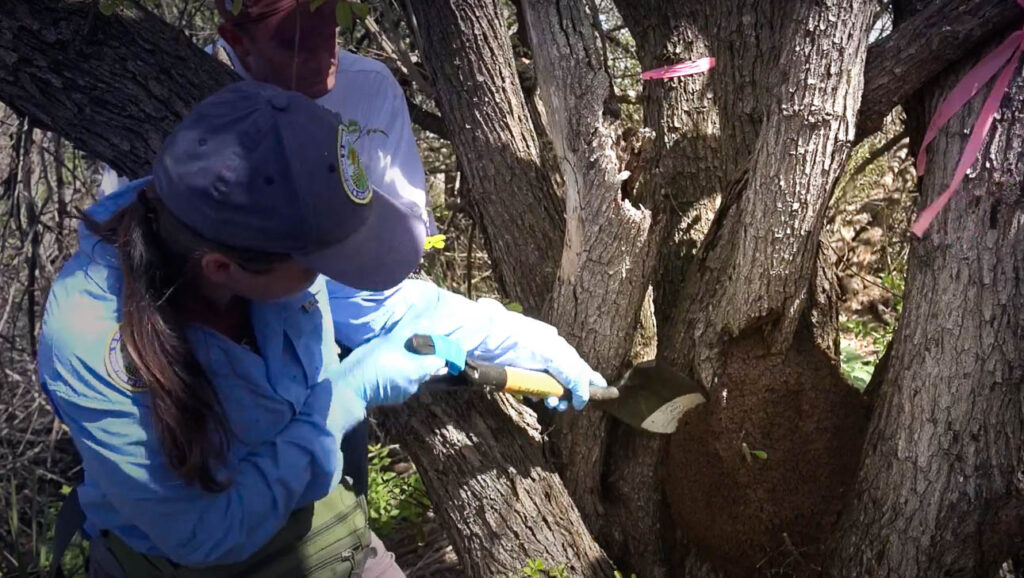About Conehead Termites.
There is no better way to describe this species of termite than how the name “conehead” describes it. Conehead termites are a species of termite with a cone-shaped head attached to their cylindrical body which is cream in color. They have 6 pairs of legs and a pair of long antennae. Under normal conditions, they can grow to a length of about 3-4mm. This clearly shows how big they can get.
Let’s take a look at some of the features that can help you distinguish conehead termites from every other termite. With this, you will have a clear picture of what conehead termites look like and how they relate to their environment and survive on wood.
Appearance
The best way to notice the activities of conehead termites and be sure that it’s them is by checking the surface of the ground in the grass, trees, and bushes to see if there are any nests or tunnels above the ground. Unlike other species of termites that prefer to keep their nest and tunnels hidden under the ground, conehead termites create theirs above the surface of the ground. The tunnels and nests are easily noticeable; they often appear as chewed wood or mounds of mud. Also, conehead termites have an easily noticeable physical appearance. The soldier of conehead termites has a brown cone-shaped head with a cream-colored abdomen. Also, they are longer and more narrow than other castes in the colony. Also, the soldiers make up about 20-30% of the colony, leaving the workers with a larger share of the population.

Behavior
This particular species of termite is one of the most notorious home invaders in the United States. Within just a short time, the level of damage that they create is highly significant. Also, conehead termites have an incredible concealing habit and stay hidden for years in a particular place before they start building a colony. But as the colony increases in size, they begin to appear above the ground and other places such as trees, shrubs, poles, and wooden building materials where they become noticeable. But at that stage, the level of damage they would have caused is usually severe.
Being a cellulose loving termite, they don’t discriminate against their food source. Provided it’s a source with an abundance of cellulose, they will devour it. The worker termites will infest and devour live or dead trees, roots, shrubs and bushes, and even structures, furniture, rails, signposts, fence posts, and paper products made from wood or lumber. There are no limits to what they can consume, provided it is a source of cellulose. Their ability to adapt to all kinds of weather conditions also makes them widely spread across different parts of the United States.
Life Cycle
Just like every other species of termite, colonies do start from just a single king and queen. As the colony matures and the number of termites increases, a high number of alates, also known as the reproductives, will be formed. Each of these alates develops a form of temporary and weak wings and flies out of the nest to mate. After mating, couples set out to find and form new colonies of conehead termites. Also in a colony of conehead termites, the soldiers are sterile and do not take part in a mating flight. Only the king and queen are capable of reproduction. The queen secretes a particular hormone to keep all the soldier termites sterile.

Habitat
Conehead termites are usually considered as subterranean termites due to their special liking for ground colonies and their ability to create underground tunnels and mounds when their colony is still at its initial stage. But the fact about conehead termites is that they are capable of living and building a colony above the ground on any wood surface.
Although, they tend to thrive more in tropical climate zones where there is an abundance of both dead and live wood.
